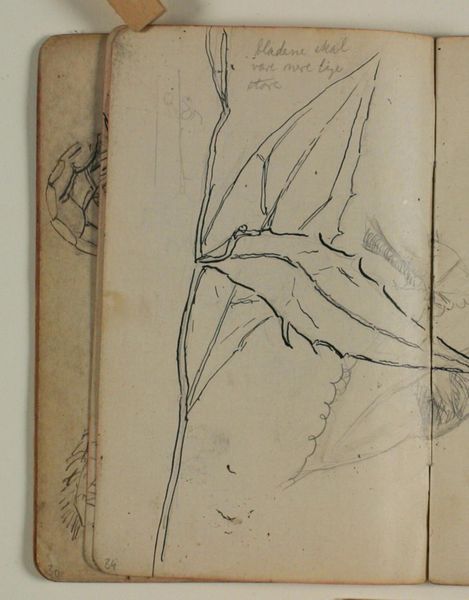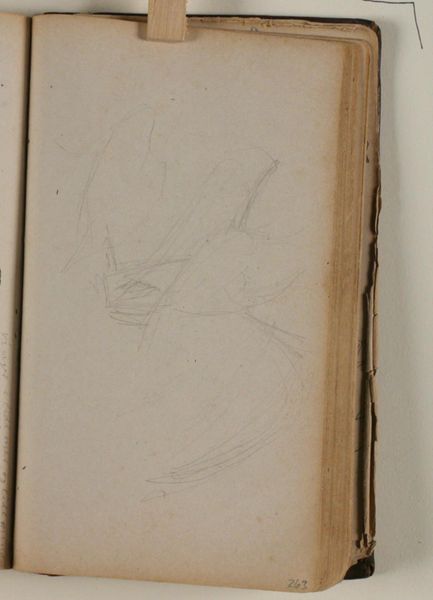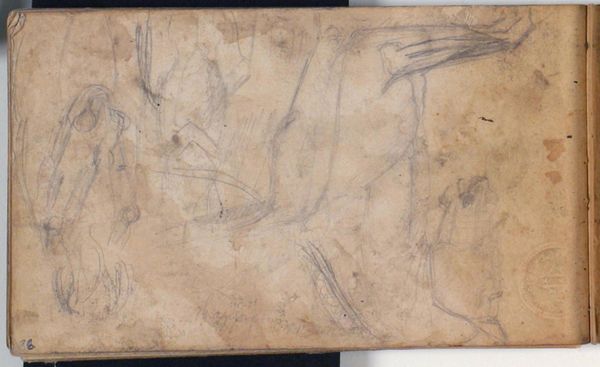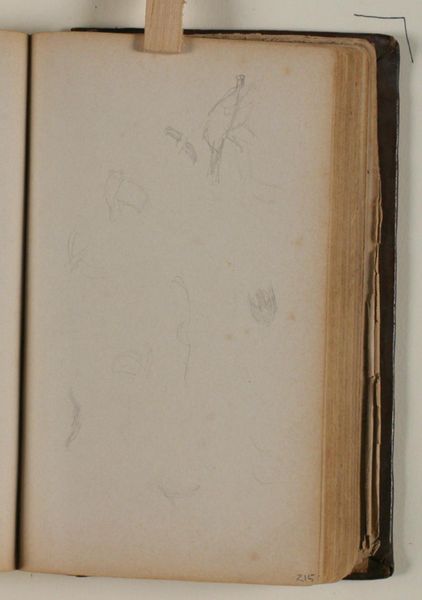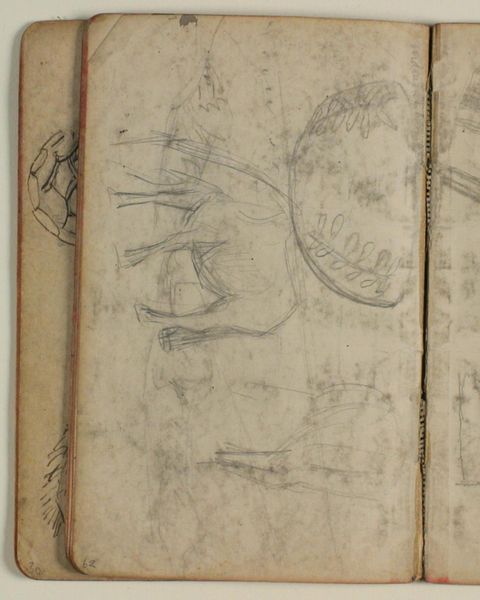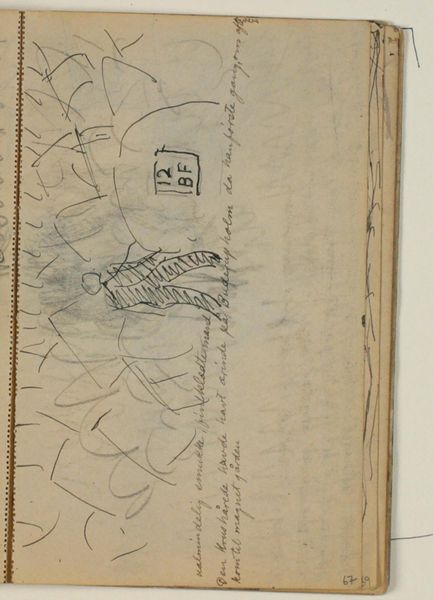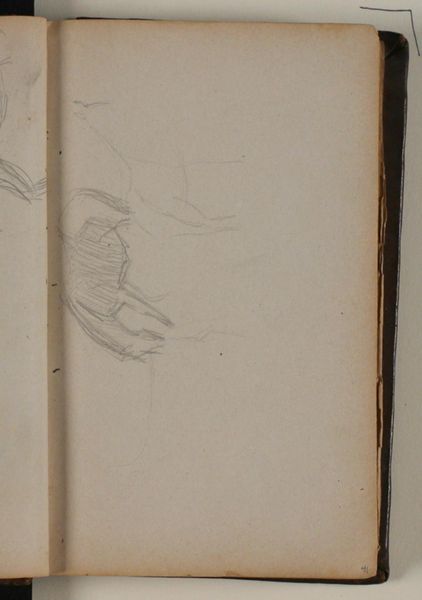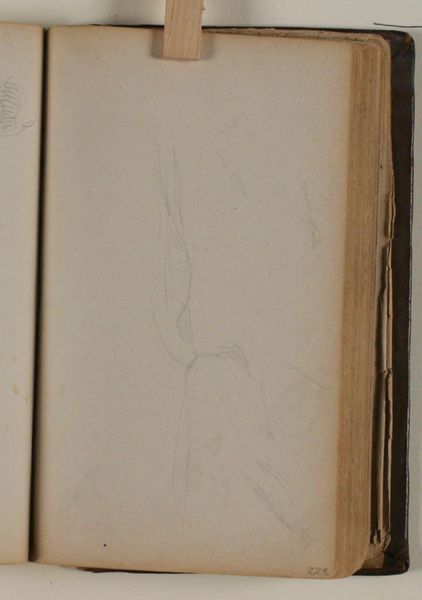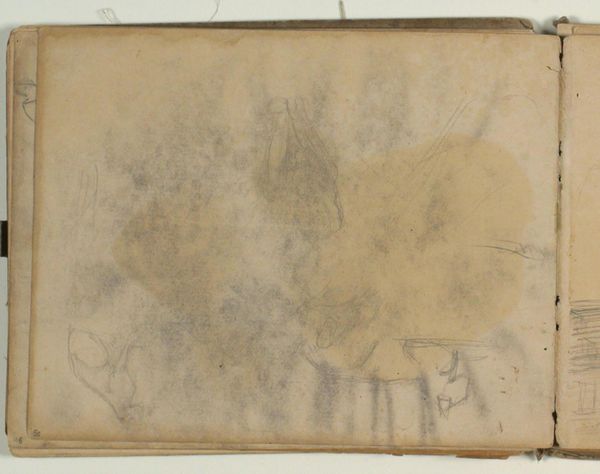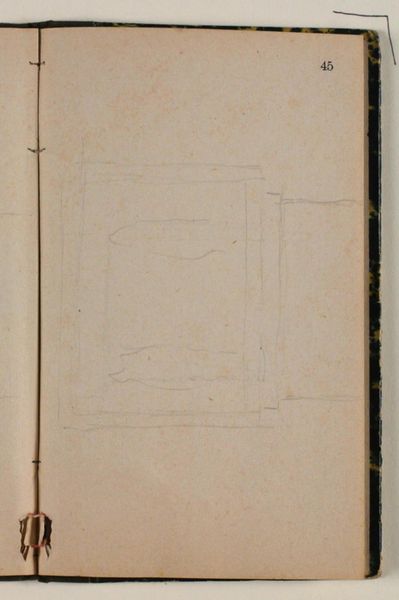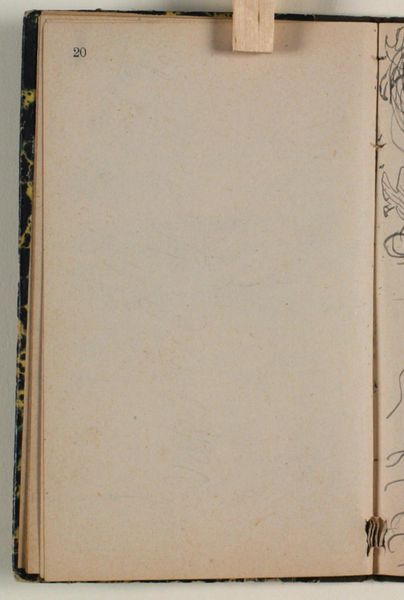
Dimensions: 161 mm (height) x 96 mm (width) (bladmaal)
Curator: This work, titled "Plantestudie," or "Plant Study" in English, was created by Niels Larsen Stevns sometime between 1906 and 1910. It’s currently held here at the SMK, the Statens Museum for Kunst. Made with pencil and coloured pencil on paper, it’s an unassuming yet intriguing landscape study. Editor: Intriguing is right. At first glance, it feels very preliminary, like a collection of quickly jotted impressions rather than a finished piece. It feels intimate. Curator: It’s interesting to consider the artist’s approach to nature here. This was a period of burgeoning social movements—a new century grappling with modernization while trying to remain connected with the land and the past. This study sits within that tension. Editor: I agree, and those quick, light pencil strokes evoke that tension for me. They're sketches of plant life, reduced to almost symbolic shorthand, capturing the essence of each form rather than attempting a realistic portrayal. Notice the recurring leaf shapes. Curator: That shorthand connects to the Symbolist movement influencing artists at the time. It wasn't just about accurately depicting what's seen, but about accessing deeper truths, perhaps connecting with some national identity connected to nature. Editor: Symbolism…yes, I see it. These plant forms become stand-ins for something larger. It makes me wonder about the role of nature as a source of healing, or of resistance against societal norms in those days. These weren't mere landscapes; they were reflections of a cultural mood, a deep searching. Curator: Precisely. The artist wasn’t merely rendering a botanical study; he was actively participating in an ongoing dialogue about Danish identity, progress, and the environment. And as a medium, drawing allows that intimacy, and immediate relationship to the land. Editor: Looking closely, I notice the rough texture of the paper, the visible pencil marks, creating layers of visual information. This sketch becomes almost a repository of cultural memory. Curator: In short, the study encapsulates more than first meets the eye, embodying socio-political contexts. It opens a dialogue about progress, about historical shifts and what landscape meant during this moment in time. Editor: Indeed. “Plantestudie” resonates far beyond a simple landscape drawing, becoming a symbol of deeper meaning.
Comments
No comments
Be the first to comment and join the conversation on the ultimate creative platform.
